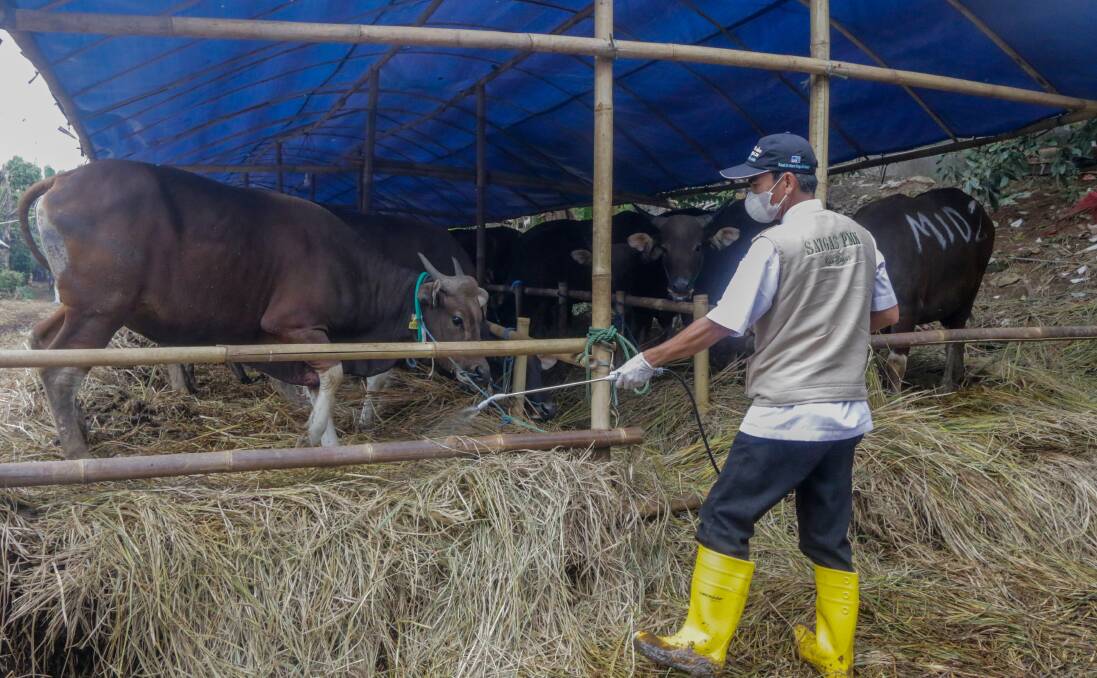
AUSTRALIA'S live cattle export trade has come to a grinding halt as Indonesian feedlots cancel orders en masse to avoid paying big dollars for animals likely to contract foot and mouth disease.
Subscribe now for unlimited access to all our agricultural news
across the nation
or signup to continue reading
Industry leaders and the federal government insist the hiatus will be short-term, with the fundamentals of Indonesian demand solid as the nation of 270 million relies heavily on Australian cattle to meet its animal protein needs.
But some experienced northern cattlemen have genuine fears for the future of the trade.
They say it is facing big threats on a number of battlefronts, the likes of which have never before been seen.
The latest figures show live cattle exports are running 55 per cent under the five-year average. In June, numbers to Indonesia - Australia's largest live cattle market by far - dropped back to just 25,730.
In some years, they have totalled over 50,000 for June, which is a time when large numbers of northern cattle for the live-ex market typically become available.
But those dire figures are expected to decline even more drastically when July data becomes available.
They were pumped up by orders made in May and anecdotal reports are very few head have left Australian shores in the past month.
Live exporters have confirmed only a handful of Indonesia feedlots are still operating.
Increased numbers to Vietnam have been just a drop in the ocean and overall, exports are running nearly 67pc under the five-year average trend for June, according to Thomas Elder Markets data.
With one infected animal enough to shut an entire Indonesian feedlot down, causing a massive loss to the business, experts say it won't be until vaccination is widespread that volumes can start to flow again.
Australia's contributed supply of vaccines won't arrive until next month. In a herd of 18m, less than a million Indonesian cattle are currently vaccinated.
How many months of no buying action from Indonesia an Australian exporter, or for that matter the average live cattle producer in northern Australia, will be able to absorb is the unknown.
Federal agriculture minister Murray Watt said while there was concern about the drop in numbers, and his government was keen to see it lift again, he was 'still very confident and optimistic about the future of the live cattle industry.'
"In meetings, we've made it very clear Australia is an enthusiastic cattle supplier to Indonesia," he said.
"They're our biggest market for live cattle. We want it to stay that way and grow.
"We've been reassured by Indonesia that they are keen to see that rebound."
ALSO SEE:
Tipping point
Foot and mouth in Indonesia is not the only threat to the trade at play.
Northern Livestock Exporters Association chairman David Warriner says the odds of lumpy skin disease getting into Australian herds by insect transmission on monsoonal winds is very real.
"LSD has continually moved south from the northern hemisphere for years and has not been checked. This is how bluetongue, three day sickness and other diseases come into Australia," he said.
None of those, however, shut down export markets overnight the way a lumpy skin incursion would.
Mr Warriner: "LSD could be the tipping point to end of the northern live trade I am afraid."
Live sheep precedent
Overhanging both disease perils is a federal government working towards shutting down the trade of live sheep.
It insists it does not have the same plans for cattle.
However, few beef producers, whether they supply the live cattle trade or not, believe one won't lead to the other, given the right set of circumstances.
Mr Watt says there are differences between the two trades that will protect the cattle business.
"Unfortunately the live sheep industry lost its social licence in a series of distressing events," he said.
"In relation to animal welfare, we haven't seen the same problems in the live cattle industry. I don't think the live cattle industry has suffered the same reputational damage that the live sheep industry has in the eyes of the community.
"That's why it's different. We think there is a difference in animal welfare issues and we think the Australian community has different opinions about live sheep compared to live cattle.
"I want to really assure the live cattle industry that we have no intention whatsoever of shutting the trade down."



